- TOP
- Mirror with Chrysanthemums and Birds
Overview
Mirror with Chrysanthemums and Birds
- Museum No.
- EK17-12
Showing 1-6 of 1
| Title | Mirror with Chrysanthemums and Birds |
|---|---|
| Designation | |
| Artist | |
| Category | Metalwork(E), Bronze Mirrors |
| Country | Japan |
| Period | Kamakura Prophase |
| Century | 12th~13th |
| Year | |
| Quantity | |
| Materials | |
| Dimensions | Diameter 9.4cm Rim height 0.4cm Rim width 0.45cm |
| Inscription by | |
| Signature/Seals Etc | |
| Donor |
Included Works

EK17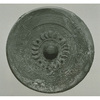 Mirror with Abstract Animals in Band
Mirror with Abstract Animals in Band
EK17-1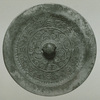 Mirror with Whirlpool Design
Mirror with Whirlpool Design
EK17-2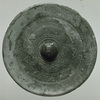 Mirror with Flower Design and Seven Arcs
Mirror with Flower Design and Seven Arcs
EK17-3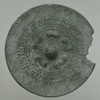 Mirror with Five Animals
Mirror with Five Animals
EK17-4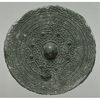 Mirror with Abstract Animals in Band
Mirror with Abstract Animals in Band
EK17-5 Mirror with Four Animals
Mirror with Four Animals
EK17-6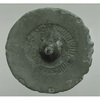 Mirror with Tooth Comb Pattern
Mirror with Tooth Comb Pattern
EK17-7 Mirror with Abstract Animals in Band
Mirror with Abstract Animals in Band
EK17-8 Mirror with Pines and Cranes
Mirror with Pines and Cranes
EK17-9 Mirror with Cranes and Pines and Butterflies
Mirror with Cranes and Pines and Butterflies
EK17-10 Mirror with Arabesque and Phoenixes
Mirror with Arabesque and Phoenixes
EK17-11 Mirror with Chrysanthemums, Butterflies, and Birds
Mirror with Chrysanthemums, Butterflies, and Birds
EK17-13 Mirror with Globeflowers and Flying Sparrows
Mirror with Globeflowers and Flying Sparrows
EK17-14 Mirror with Chrysanthemum Branches and Flying Sparrows
Mirror with Chrysanthemum Branches and Flying Sparrows
EK17-15 Mirror with Autumn Plants, Butterflies, and Birds
Mirror with Autumn Plants, Butterflies, and Birds
EK17-16 Mirror with Cranes and Pine Needles
Mirror with Cranes and Pine Needles
EK17-17 Mirror with Auspicious Flowers and Birds
Mirror with Auspicious Flowers and Birds
EK17-18
This object may be one within a set or the title of a set. To see all objects in the set, perform a Category Search by the Museum Number below, entering numerals only before the hyphen.







This small mirror is dark green in color, with a flaring, thick rim and thin body. Mirrors of this type are numerous, and almost without exception the knob surround is a simple floral shape. There is a strong probability that they all were made in the same workshop. A casting mold for mirrors with a very similar rim were recently discovered, along with artifacts dating to the early 13th century, at the Hachijôin-chô site in Kyoto, revealing a part of a once-active workshop. Excavated examples also date mainly to the same period, from the late 12th century to the first half of the 13th century. These include three mirrors, excavated together with a sutra container bearing a dated inscription corresponding to 1203 (Kennin 3), and a sutra scroll that included a postscript bearing the same date, from the Santai-ji Temple Sutra Mound in Niigata Prefecture. The museum mirror features a standard composition of a chrysanthemum bending toward the left, but the representation of the flower petals as straight lines is peculiar to the craftsman who wielded the spatula.
Japan-Kamakura-Early